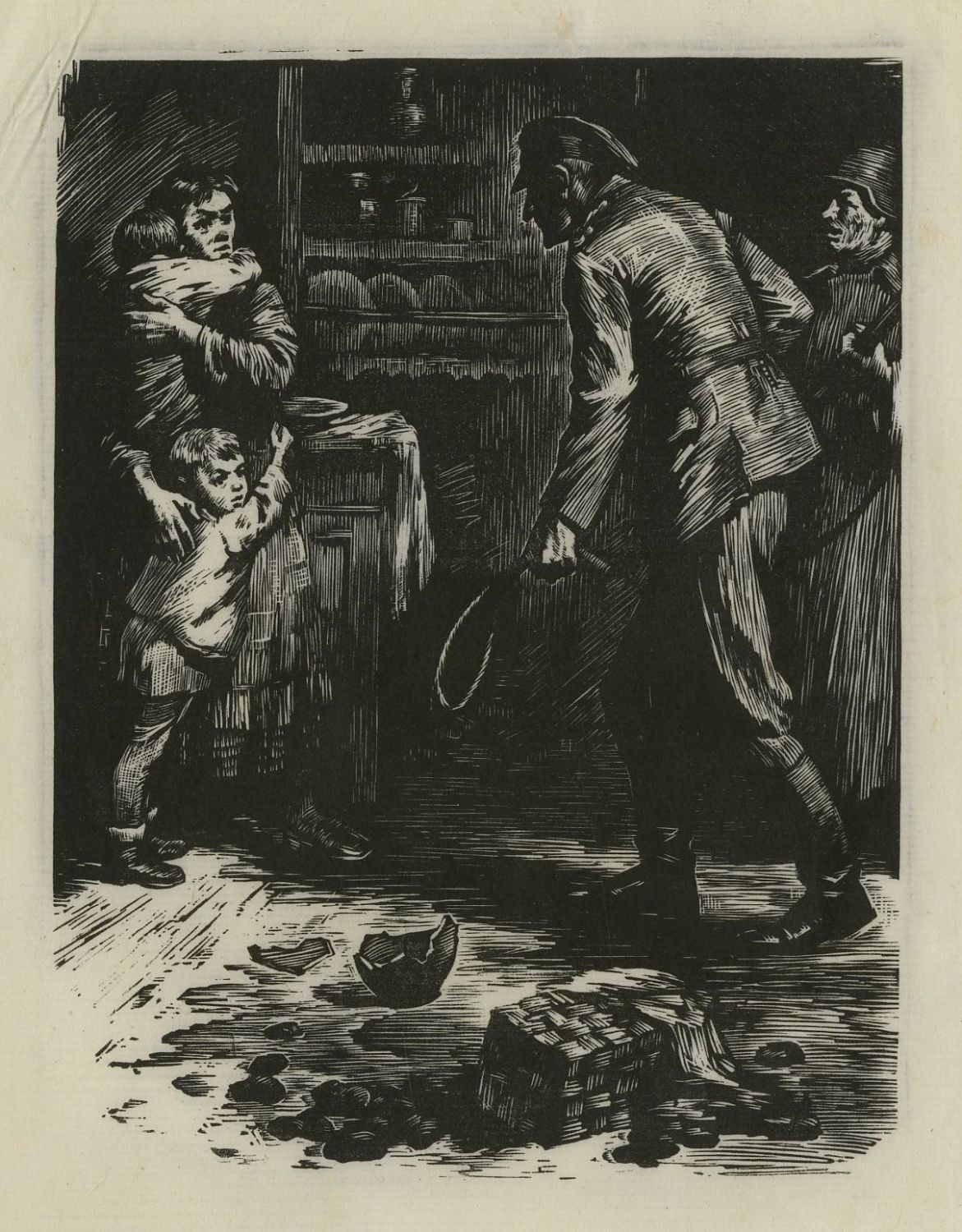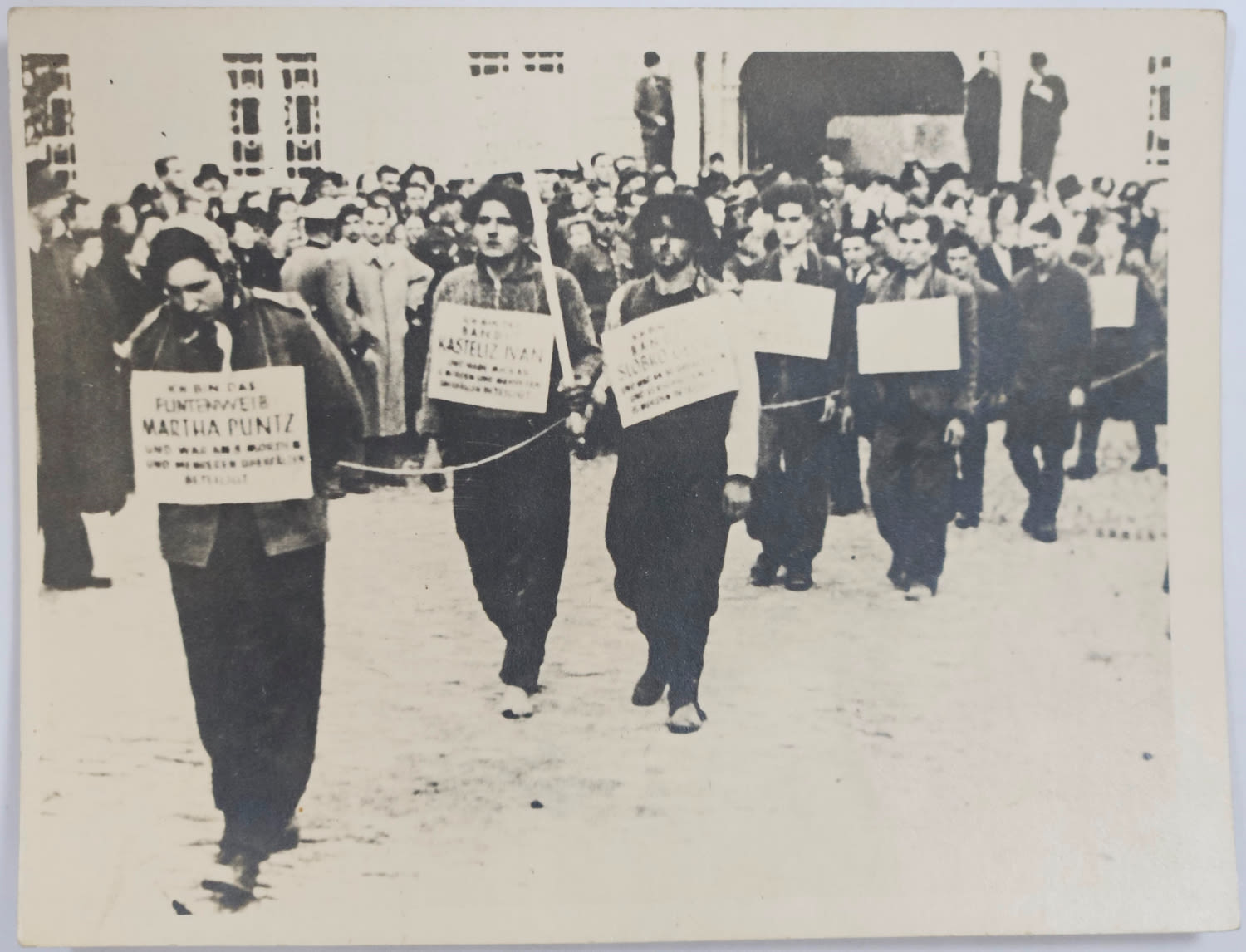COBAYES HUMAINS enquète de trois médecins suisses dans les bagnes nazis - "Human guinea pigs - investigation by three doctors in the Nazi camps", by Dr G. MENKES, Dr. R. HERRMANN, Dr A. MIEGE - three Swiss doctors who arrived at the camps at the end of the war to investigate the "medical experiments" that the SS criminals and their helpers in the death camps performed on the prisoners during the operation of the camps . A detailed and uncensored report describing in detail the horrible acts the Nazis carried out on the "human guinea pigs" - death camp inmates. Accompanied by harsh to view photographs of those prisoners who were abused by the Nazis, as well as of the bodies of those who perished. An early report and perhaps the first of its kind revealing the major and horrific crimes committed by humans since the dawn of human history. Emotionally very hard to read. Geneva - Paris, 1946 - First Edition. French.
A detailed report published after the visit of three Swiss doctors to the Dachau, Strothoff, death camps, and Mainau - in which prisoners from other camps were gathered, with the aim of examining and exposing Nazi sadism through the medical experiments they performed on the death camp prisoners during the war. The three examined the various torture facilities in the camps, talked with residents who lived near the camps, collected testimonies from prisoners, including those who were themselves present during the experiments, and examined documents documenting details of the harsh experiments and tortures the Nazis carried out on the Jewish prisoners in these camps.
When the three arrived at the Dachau camp at the time of its liberation, they noticed prisoners rummaging through the trash and describe what they saw as the reflex of an animal looking for food. Some of the prisoners licked empty cans of condensed milk. The report provides many details about the area of the Dachau camp, its various wings, and the torture facilities as well as the prisoners' daily routine.
In Dachau, their examination revealed that from 1941, casual nurses without any medical qualifications were operating in the camp. Those nurses were engaged in amputating fingers, toes and limbs of prisoners without anesthetics. During this period, experiments were conducted in Dachau with about 1100 prisoners who were injected with vaccines with different drug combinations in order to test their effectiveness against malaria (Prof. Claus von Schilling, 73 years old, was in charge of all experiments related to malaria in the camp). Klaus used to inject the blood of sick people into the bodies of healthy prisoners. Most of them died within hours, or a few days. In addition, it reports on experiments that the Nazis did on prisoners, the purpose of which was to make the German Air Force more efficient. For example, in an attempt to determine how long a German pilot lost at sea in the polar region could stay alive before being rescued, prisoners were brought to a state of near death (in various ways difficult to detail here), and an attempt was made to revive them at the last minute. Even in these experiments, most of the prisoners who were "selected" for the mission found their death within minutes. The doctors report on experiments that the Nazis carried out on the digestive system of the prisoners by feeding the prisoners for several months only one sort of food for several months such as raw cabbage, disgusting experiments on blood clotting, experiments related to the gas system, artificial insemination in women in an attempt to isolate the Aryan race, injections of acids, and more that is hard to imagine that these things were done. The organs of the unfortunates who died as a result of those experiments were cut by the Nazis and sent to "research" in various laboratories in Germany.
In one of the chapters, the three mention the horrifying fact that the Nazi doctors published the "results" of their experiments in various German medical journals, and several examples of these publications are given, in which the details of the prisoner on whom the experiment was carried out are horrifyingly detailed, how long he was in the camp, his age, his medical condition, the experiment that was carried out on them, and the results.
Also, for the first time, the medical experiments carried out in Block 46 in Buchenwald are revealed here. The block was shrouded in more complete secrecy than all the other camps where the experiments were carried out. The block itself was surrounded by a barbed wire fence. A person who witnessed those experiments, either as a doctor or as a bystander, who was suspected of giving the slightest allusion to what was done there was punished by death on the spot. The entire staff that worked in this block was destroyed before the liberation of the camp. However, the three doctors managed in different ways to trace what was done there. In this block, experiments on humans related to vaccinations, injections, experiments on burns made on the bodies of the prisoners, experiments on the reactions of the prisoners to extreme cold, and more, which is difficult to put into writing.
At the end of the book under the title "Scientific extermination" is the testimony of Dr. Henri Christian - prisoner no. 98,752 of the Dachau camp, who recounts what he saw at the end of July 1943 - a gas experiment performed on 30 Jewish women who came to the camp from different countries.
The three write: "We saw tens of thousands of cases of edema in the German concentration camps, as far as we know, no research nor laboratory analysis, no serious scientific work was carried out on these edemas and the way to cure them... The significance of the SS experiments in the face of human experiments were simple excuses to kill.. The prisoners of the camps were simply laboratory animals...".
More in the book are important details about the form in which the extermination was carried out by the Nazis themselves, for example in the documents they found in Strothoff it is detailed that every executioner who executed a prisoner received in return a bottle of brandy, a portion of sausage, and 6 packs of cigarettes. According to the report there on the night between September 1st and 2nd, 1944, nearly 400 people were executed by eight hangmen, so that each hangman received the above dose twice the number of people he executed. Another horrifying fact described here - The blocks were full of vermin so that even at night the prisoners could not sleep due to itching, while right next to the blocks in a fenced lot the Nazis raised rabbits whose skin was used for the winter uniforms of the SS soldiers, these cages were scrupulously clean and no vermin were ever seen in them - a startling example of the Nazis' treatment to humans compared to animals.
The three write: "We repeatedly ask ourselves the question, did these experiments have a scientific value that could justify them, and we answer: absolutely not. Not one of these experiments has any scientific value. Moreover, not one of these experiments was carried out In order to solve an important scientific problem... it is impossible to attribute any scientific value to these idiotic experiments. You don't need to be a scientist to understand that injecting pus into emaciated, malnourished and weak men inevitably leads to death...".
The writers express the shock and the hard feelings they felt in light of the revelation of these horrors that are almost unimaginable that were committed in reality, and write that there are no words in the language they used to express their feelings when these things were revealed in their investigation. In the last part of the book, the authors try to analyze the phenomenon of how such blind loyalty to the Fuhrer led to such serious crimes. And explain how destructive the Nazi race theory is.
Out of respect for the public and the severity of the matter, we have not described here not even a hint of the harsh things exposed in this publication.
90 [5] p. 19 cm. Good condition.













